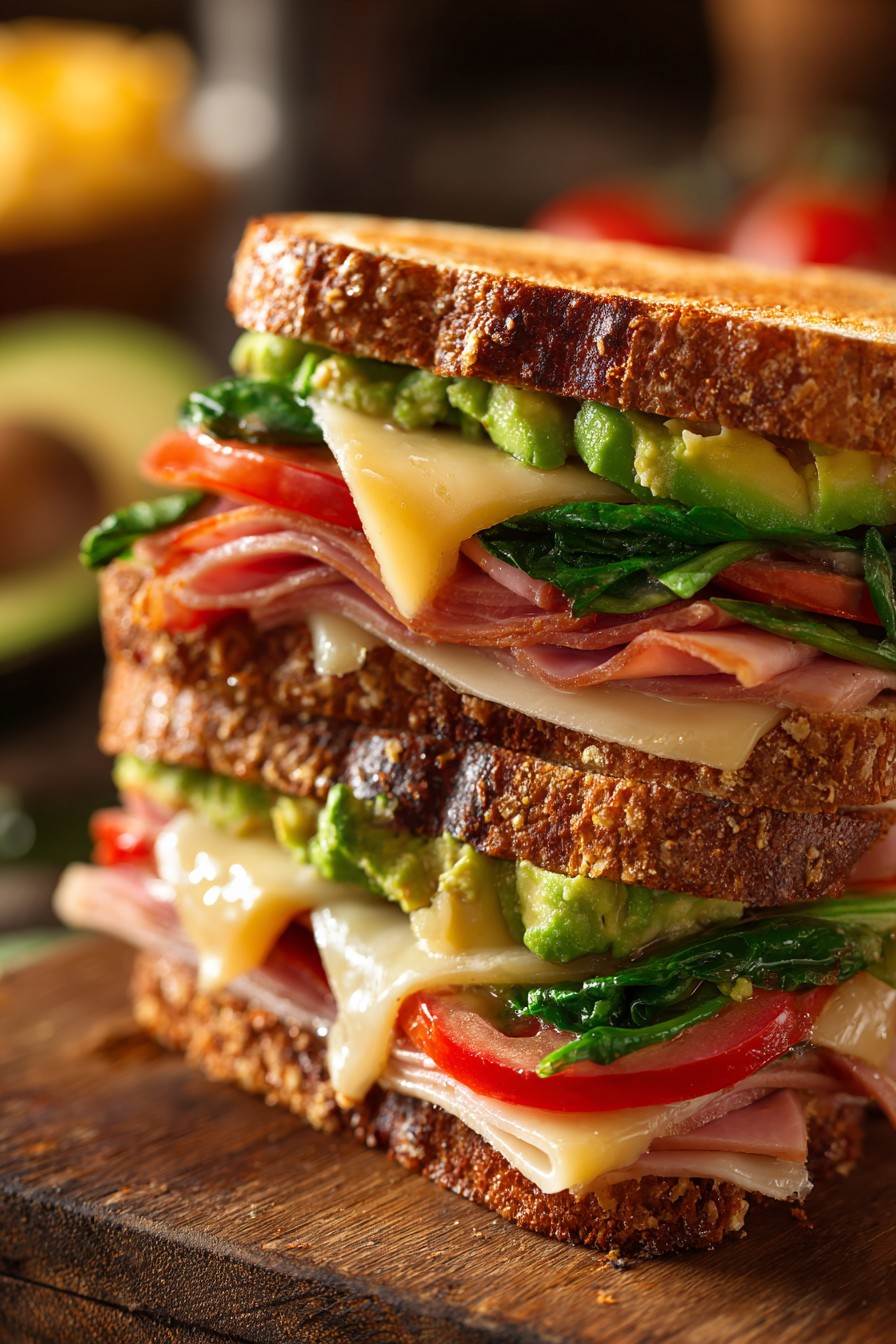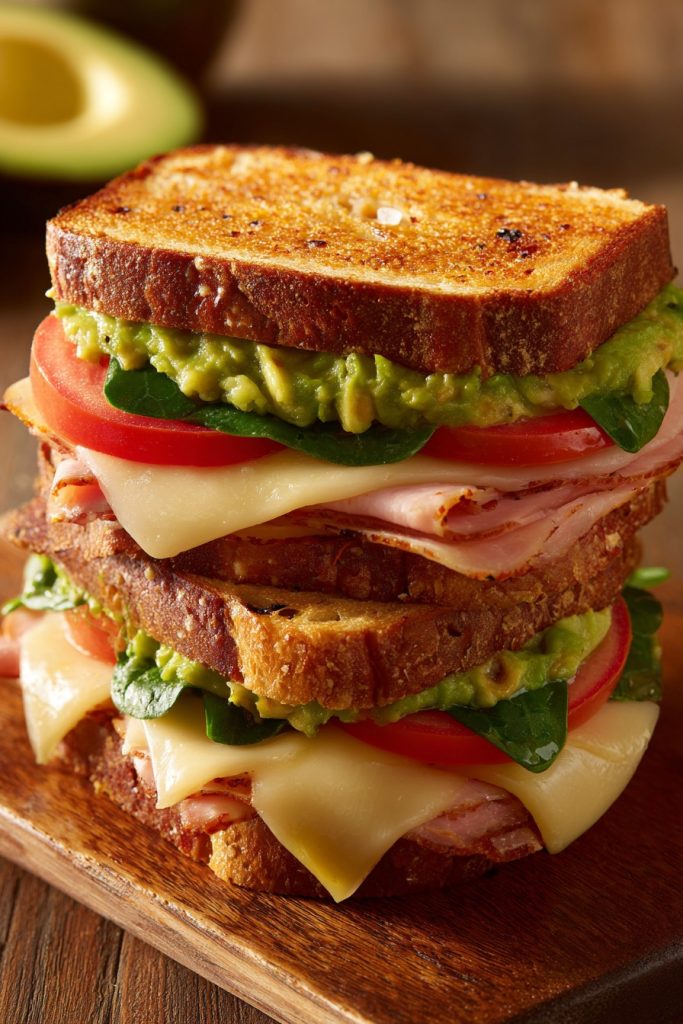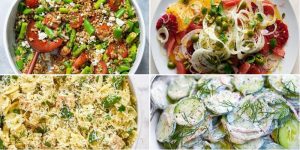Every classic comfort food deserves a health-conscious makeover, and today we’re transforming the humble ham and cheese sandwich into a nutritionally balanced meal that satisfies both your taste buds and your wellness goals. Embracing whole food ingredients and mindful preparation techniques elevates this childhood favorite into a sophisticated, protein-packed lunch option that supports sustained energy and overall vitality.
Why This Recipe Works
- Our selection of nitrate-free, low-sodium ham provides high-quality protein while minimizing processed ingredients and excess sodium that can impact cardiovascular health
- The combination of whole grain bread and fresh vegetables delivers complex carbohydrates and dietary fiber that support digestive health and provide steady energy release throughout your day
- Using a light spread of avocado instead of traditional mayonnaise reduces saturated fat content while adding heart-healthy monounsaturated fats and essential nutrients like potassium and vitamin E
- Strategic layering of ingredients ensures optimal texture and flavor distribution while maximizing the bioavailability of nutrients through complementary food pairing
- The inclusion of fresh spinach and tomatoes contributes antioxidants, vitamins A, C, and K, plus phytonutrients that support immune function and cellular health
Ingredients
- 4 slices whole grain bread, preferably sprouted grain for enhanced nutrient absorption
- 6 ounces nitrate-free, low-sodium ham slices, thinly sliced for even distribution
- 4 slices reduced-fat Swiss cheese, providing calcium with lower saturated fat content
- 1 medium ripe avocado, mashed with juice from half a lemon to prevent browning
- 1 cup fresh spinach leaves, thoroughly washed and patted dry
- 1 medium tomato, sliced into ¼-inch thick rounds
- 1 tablespoon Dijon mustard, offering flavor without added sugars
- ¼ teaspoon garlic powder, for enhanced flavor without sodium
- ¼ teaspoon black pepper, freshly ground for optimal antioxidant content
- Optional: 2 tablespoons red onion, thinly sliced for additional phytonutrients
Equipment Needed
- Cutting board
- Sharp chef’s knife
- Small mixing bowl
- Measuring spoons
- Toaster or oven
- Spatula
- Kitchen scale (optional, for precise ingredient measurements)
Instructions

Prepare Your Nutrient-Dense Spread
Begin by carefully slicing your avocado in half lengthwise, removing the pit, and scooping the flesh into a small mixing bowl. Add the juice from half a fresh lemon, which not only prevents oxidation but also enhances vitamin C absorption from other ingredients. Mash the avocado with a fork until you achieve a smooth, spreadable consistency, then mix in the garlic powder and black pepper. This combination creates a creamy base rich in monounsaturated fats, fiber, and potassium while avoiding the saturated fats and preservatives found in traditional mayonnaise. The lemon juice contributes additional flavonoids that support collagen production and iron absorption from the spinach. For optimal nutrient preservation, prepare this spread immediately before assembling your sandwiches to minimize exposure to air and light.
Toast Your Whole Grain Foundation
Place your whole grain bread slices in a toaster set to medium-dark setting, or arrange them on a baking sheet in an oven preheated to 375°F for 5-7 minutes until golden brown and crisp around the edges. The toasting process enhances the bioavailability of certain nutrients in whole grains while creating a sturdy foundation that prevents sogginess from the moist ingredients. Whole grain bread provides complex carbohydrates for sustained energy, along with B vitamins, iron, and dietary fiber that support digestive health. The slight charring from toasting creates beneficial compounds that may support antioxidant activity. Monitor the toasting process carefully to avoid burning, which can create potentially harmful compounds while diminishing nutritional value.
Assemble with Strategic Layering
Lay your toasted bread slices on a clean work surface and spread approximately two tablespoons of the avocado mixture evenly across all four slices. On two of the slices, layer one cup of fresh spinach leaves, creating a green barrier that helps prevent moisture from the tomatoes from making the bread soggy. Next, arrange your tomato slices in a single layer, followed by the ham slices folded to create texture and even distribution. The spinach provides iron, folate, and vitamins A and K, while the tomatoes contribute lycopene, a powerful antioxidant that becomes more bioavailable when paired with healthy fats like those in avocado. This specific layering sequence ensures structural integrity while maximizing nutrient absorption through strategic food combining.
Add Cheese and Complete Assembly
Place two slices of reduced-fat Swiss cheese over the ham layer on each sandwich half, ensuring the cheese covers the entire surface area to create a cohesive bond when melted. Reduced-fat Swiss cheese provides the creamy texture and protein benefits of traditional cheese with approximately 30% less saturated fat and sodium. Top with the remaining bread slices, avocado side down, pressing gently to secure all components. The cheese placement directly against the ham facilitates even melting while creating a protein-rich layer that helps stabilize blood sugar levels. The calcium in Swiss cheese supports bone health, while its protein content contributes to muscle maintenance and satiety hormones that help control appetite.
Optional Heating for Enhanced Flavor and Safety
If you prefer a warm sandwich, preheat a non-stick skillet over medium heat (approximately 325°F surface temperature) and place your assembled sandwiches in the dry pan. Cook for 3-4 minutes per side, pressing down gently with a spatula, until the bread is golden brown and the cheese begins to melt. Heating the sandwich not only enhances flavor through Maillard reactions but also ensures food safety by bringing the internal temperature to at least 165°F, eliminating potential pathogens. The gentle heating process also makes the lycopene in tomatoes more bioavailable while maintaining the heat-sensitive nutrients in the spinach and avocado. For those monitoring calorie intake, this dry-toasting method avoids additional fats while achieving optimal texture and food safety.
Tips and Tricks
For those seeking to maximize the nutritional profile of their ham and cheese sandwiches, consider these advanced preparation techniques. When selecting your whole grain bread, opt for sprouted varieties whenever possible, as the sprouting process increases the bioavailability of minerals like iron and zinc while reducing phytic acid content that can interfere with nutrient absorption. The fermentation involved in true sourdough bread can also enhance digestibility and nutrient availability. For your protein component, explore beyond traditional ham—consider roasted turkey breast, grilled chicken, or even marinated tofu for plant-based alternatives that provide complete proteins with different amino acid profiles.
Vegetable selection offers numerous opportunities for nutrient optimization. Instead of traditional iceberg lettuce, which provides minimal nutritional value, consider arugula for its peppery flavor and high levels of vitamin K, folate, and antioxidants. Microgreens make an excellent addition, containing up to 40 times more nutrients by weight than their mature counterparts. Roasted red peppers can substitute for fresh tomatoes during off-season months, providing enhanced vitamin C content and different antioxidant profiles. When preparing vegetables, cutting techniques matter—slicing tomatoes vertically rather than horizontally preserves more of the gel around the seeds that contains valuable nutrients and flavor compounds.
For those monitoring specific health conditions, several modifications can tailor this recipe to your needs. Individuals with hypertension can further reduce sodium by using homemade roasted meats instead of prepared ham and opting for low-sodium cheese varieties. Those with diabetes may benefit from using one slice of bread to create an open-faced sandwich, reducing carbohydrate impact while maintaining protein and vegetable content. For anti-inflammatory diets, consider adding a thin layer of turmeric-spiked hummus beneath the avocado spread to introduce curcuminoids that support cellular health. Always consider individual tolerances and preferences when modifying recipes, as the most nutritious meal is one you’ll actually enjoy and consume regularly.
Recipe Variations
- Mediterranean-Inspired Version: Replace ham with grilled chicken marinated in lemon juice and oregano, use feta cheese instead of Swiss, and add roasted red peppers, kalamata olives, and cucumber slices. This variation increases monounsaturated fats from olives while providing different antioxidant profiles from Mediterranean herbs and vegetables.
- Plant-Powered Protein Option: Substitute ham with marinated and baked tempeh or extra-firm tofu, use dairy-free cheese alternatives, and add roasted portobello mushrooms for umami flavor. This plant-based version provides complete proteins from soy while increasing fiber content and introducing different phytonutrients from mushrooms.
- Breakfast-Style Adaptation: Use whole grain English muffins instead of bread, replace ham with turkey sausage or vegetarian sausage patties, add a scrambled egg white mixture, and include sliced avocado. This higher-protein morning version supports sustained energy release throughout the day while providing choline for cognitive function.
- Low-Carb Wrap Alternative: Substitute bread with large lettuce leaves or low-carb tortillas, increase the ham and cheese portions for higher protein, and add additional non-starchy vegetables like bell peppers and zucchini. This modification supports blood sugar management while maintaining satiety through increased protein and fiber content.
Frequently Asked Questions
Can I prepare these sandwiches ahead of time for meal prep?
Yes, with strategic preparation techniques. Assemble the sandwiches without the avocado spread and moist vegetables like tomatoes, storing these components separately. The bread, ham, and cheese can be pre-assembled and refrigerated for up to two days. When ready to eat, add the fresh components to maintain optimal texture and nutrient content. For best results, toast the bread immediately before assembling to prevent sogginess. This approach preserves food safety while maintaining the bioavailability of heat-sensitive nutrients in fresh vegetables. The protein and complex carbohydrates will provide sustained energy, making this an excellent option for prepared lunches that support consistent nutrition throughout your week.
What are the best cheese alternatives for lactose intolerance or dairy-free diets?
Several excellent alternatives provide similar texture and flavor profiles while accommodating dietary restrictions. For lactose intolerance, aged cheeses like Swiss, cheddar, or Parmesan typically contain minimal lactose and may be well-tolerated. For complete dairy avoidance, consider nut-based cheeses made from almonds or cashews, which provide healthy fats and some protein. Soy-based options offer the highest protein content among dairy alternatives. Nutritional yeast can be sprinkled between layers to provide a cheesy flavor along with B vitamins. When selecting alternatives, read labels carefully as some processed options may contain added sodium or stabilizers that diminish their nutritional advantage over traditional cheese.
How can I increase the protein content without adding more meat?
Several strategies can boost protein while maintaining the sandwich’s nutritional balance. Consider adding a layer of hummus beneath the avocado spread, which provides plant-based protein and fiber. Sprouting your grains or using sprouted grain bread increases protein bioavailability. Adding a tablespoon of hemp hearts to your avocado spread contributes complete protein with all essential amino acids plus omega-3 fatty acids. Greek yogurt-based spreads can replace some of the avocado while significantly increasing protein content. For those who include eggs, a thin omelet layer provides high-quality protein with additional nutrients like choline. These modifications can increase protein by 8-12 grams while introducing different nutrient profiles that complement the existing ingredients.
Summary
This reinvented ham and cheese sandwich transforms a classic comfort food into a nutritionally balanced meal through strategic ingredient selection and preparation methods. By emphasizing whole foods, lean proteins, and fresh vegetables, we’ve created a satisfying option that supports sustained energy, digestive health, and overall wellness without compromising on flavor or tradition.
Elevated Ham and Cheese Sandwiches
5
servings10
minutes8
minutesIngredients
Instructions
- 1 Mash avocado with lemon juice, garlic powder, and black pepper
- 2 Toast bread until golden brown
- 3 Spread avocado mixture on all bread slices
- 4 Layer spinach, tomato, ham, and cheese on two slices
- 5 Top with remaining bread slices
- 6 Optional: Heat in skillet 3-4 minutes per side until golden



